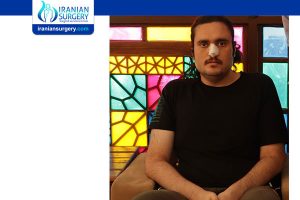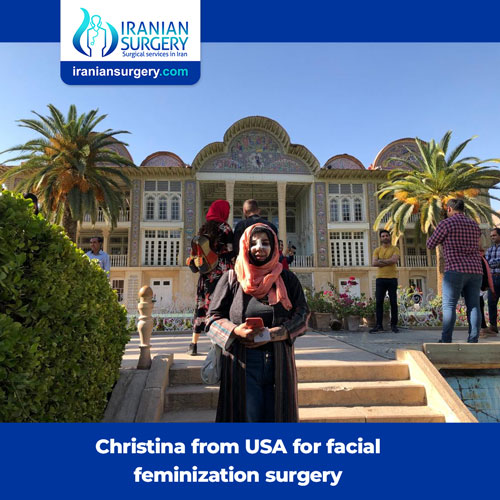All information about Rhinoplasty in Iran ( video )
Are you looking for rhinoplasty in Iran?
How much does rhinoplasty cost in Iran?
What are the conditions for nose surgery in Iran and how to obtain a treatment visa to travel to Iran?
Are you looking for the best rhinoplasty surgeons in Iran?
Hello I am Payam and you are listening to one of the Iranian Surgery podcasts. In this podcast I intend to answer some of the frequently asked questions of patients before and during their stay in Iran and if you have more questions please let us know through our website. Now I want to explain what a Rhinoplasty is.
Read more about : Types of rhinoplasty surgery by Dr.Maryam Mosleh
Read more about : 6 things you should know before travelling to Iran for rhinoplasty
Read more about : After Rhinoplasty Surgery in Iran
Read more about : Does rhinoplasty require general anesthesia?
A Rhinoplasty procedure is performed to correct various defects in the nose’s structure, shape and functionality in a way that it can change the size and shape of the nose or improve breathing difficulties. It may also be done to repair deformities from an injury, correct a birth defect or improve some breathing problems.
Now we want to know how to prepare for a rhinoplasty in Iran

Send us your questions and concerns to get a quick reply for your rhinoplasty from your doctors.
Get a quick consultaion from Iranian Surgery

Read more about : How much does rhinoplasty cost in Iran?
Read more about : Rhinoplasty in Iran
Read more about : Rhinoplasty in Iran before and after
Read more about : Closed rhinoplasty
Read more about : Ethnic rhinoplasty
Read more about : Revision rhinoplasty
Before scheduling rhinoplasty in Iran, it is a good idea to consult with a rhinoplasty surgeon in your country in order to know if you have realistic expectations or not. Because we have witnessed so many situations that some people have expectations that we cannot meet. For example, we can’t always transpose an actress’s nose onto a patient’s face. Sometimes, it’s practically impossible, meaning that your nose should fit with the rest of your features, not just a nose that looks pretty by itself. It has to mold with the rest of the face.
So when considering a nose job, you need to have clear and reasonable expectations in terms of what you want to achieve and of course the results. Besides, you should consider this important fact that rhinoplasty results take time and what a lot of people don’t realize is that it can take over a year for your nose to fully heal. I shouldn’t forget to say that you should always check out the before and after pictures before choosing the right surgeon in order to avoid a revision rhinoplasty.
I personally have faced many patients looking for Rhinoplasty in Iran and after consulting their case with our surgeons we came to realize that they were not good candidates for this procedure, so it is important to know who are and aren't good candidates for rhinoplasty.

Read more about : Rhinoplasty surgery Podcast with Dr. Afshan shah
Read more about : Rhinoplasty in Iran Before and after
Read more about : Rhinoplasty surgery in Iran Review (A patient who came from Australia to Iran for Rhinoplasty + Video)
Read more about : The Swedish patient saved $ 90,000 by choosing Iran over the United States to have leg lengthening surgery.
Rhinoplasty surgery is popular with both men and women, although more women choose to have nose surgery. The best candidates should meet these general qualifications:
. Good physical health with no serious medical conditions or illnesses
. Non-smoker
. Complete facial growth
. Positive outlook on life
. Patients who have realistic aesthetic goals and expectations
. They have a deformity which needs correcting.
. They have reached the right age, which means that younger people should wait until they reach physical maturity and then undergo this procedure. Females usually attain physical maturity earlier at the age 16 onwards while male teenagers have to wait until the age of 18 onwards. The reason for this is that the nose stops growing and changing significantly at this age.

However we may advise you not to undergo the procedure if:
. You have skin or nasal cartilage that is lacking in structural integrity.
. You have unrealistic expectations and you seek perfection, I mean if you are looking for something to transform you into another person.
. You suffer from depression or another psychological issue such as body dysmorphic disorder.
. You have high blood pressure, bleeding disorders, lung disease, diabetes, high cholesterol and severe allergies.
. You are a heavy drinker or smoker.
Now I am going to talk about different types of Rhinoplasty in Iran
There are four types of rhinoplasty procedures in Iran.
2. Open Rhinoplasty
3. Filler Rhinoplasty
4. Revision Rhinoplasty
Besides, we need to know what problems can be solved with rhinoplasty, in fact rhinoplasty can help address:
. Enlarged, bulbous, drooping, upturned or hooked nasal tip
. Large, wide or upturned nostrils
. Nasal asymmetry
. Removing a hump on the nose
. Straightening the bridge
. Reshaping the nose's tip
. A broken nose
. Correcting the nose after an injury
. Opening breathing passages
. Making the nose bigger or smaller
Well it is time to talk about factors affecting the cost of rhinoplasty in Iran.
There are many factors that determine the overall nose job cost in Iran, including:
- The surgeon’s skill. The most skilled and best rhinoplasty surgeons are in high demand. And it is worth explaining that we have worked with highly experienced and skilled surgeons working in well-equipped hospitals.
- The type of nose surgery
- Geographical location
And finally I am going to talk about rhinoplasty recovery Time and steps you can take to speed up this time and ensure that everything heals properly.
- Listen to your doctor
- Keep your head elevated at night for 6 weeks following surgery.
- Use cold compresses in the first 72 hours after surgery.
- Get plenty of rest
- Maintain a healthy diet
- Don’t blow your nose until at least 6 weeks.
- Avoid vigorous exercise until at least 6 weeks.
- Don’t wear glasses or wear them only when you absolutely need them.
- Stay Out of the Sun in the in the weeks following the procedure.
- Don’t Smoke
- Don’t not fly for at least 7 days after surgery
- Be Patient
In the end, it should be noted that we have used many reliable sources such as Mayo clinic and Johns Hopkins websites to produce this podcast, so if you think this podcast has been useful to you, please share it with others.








